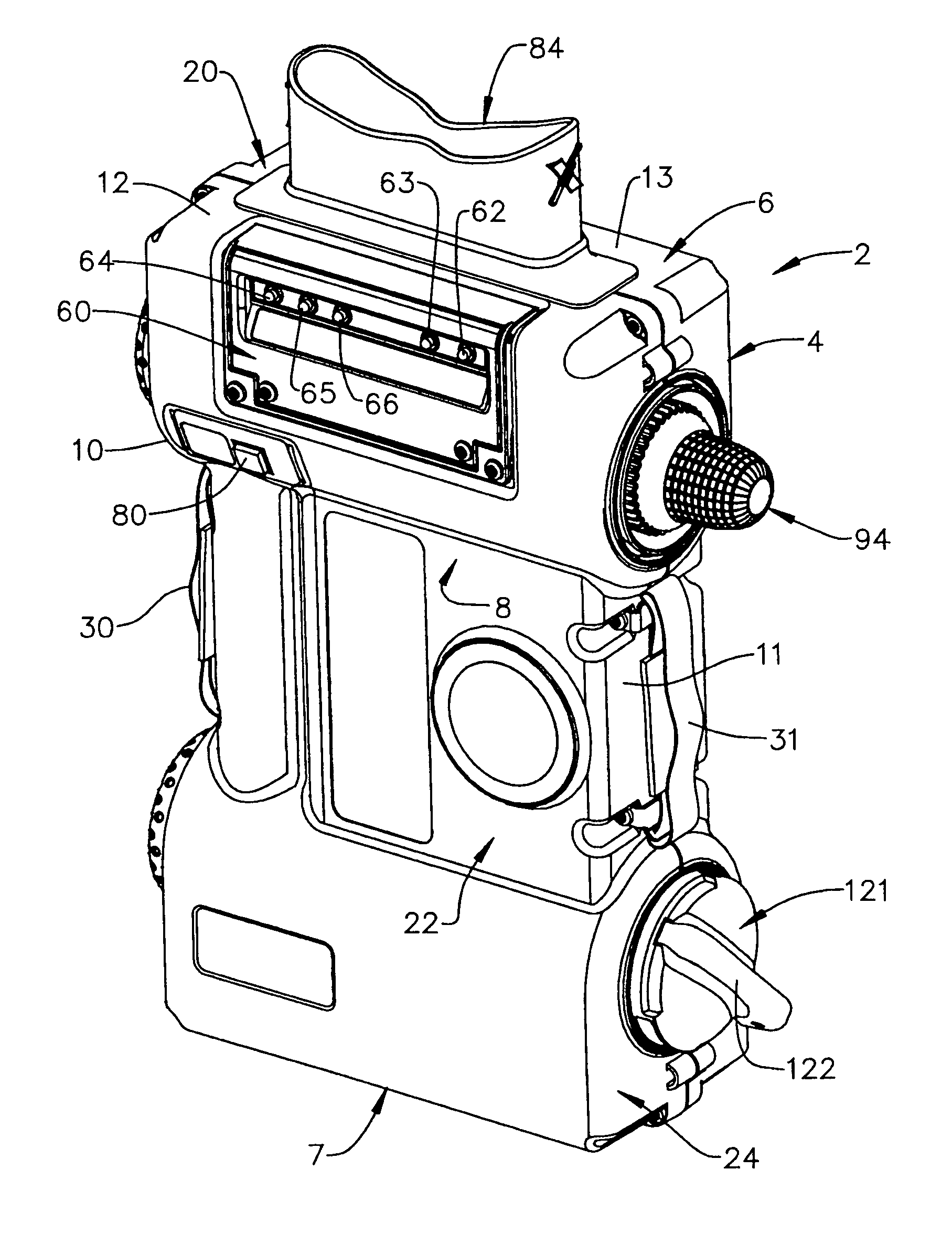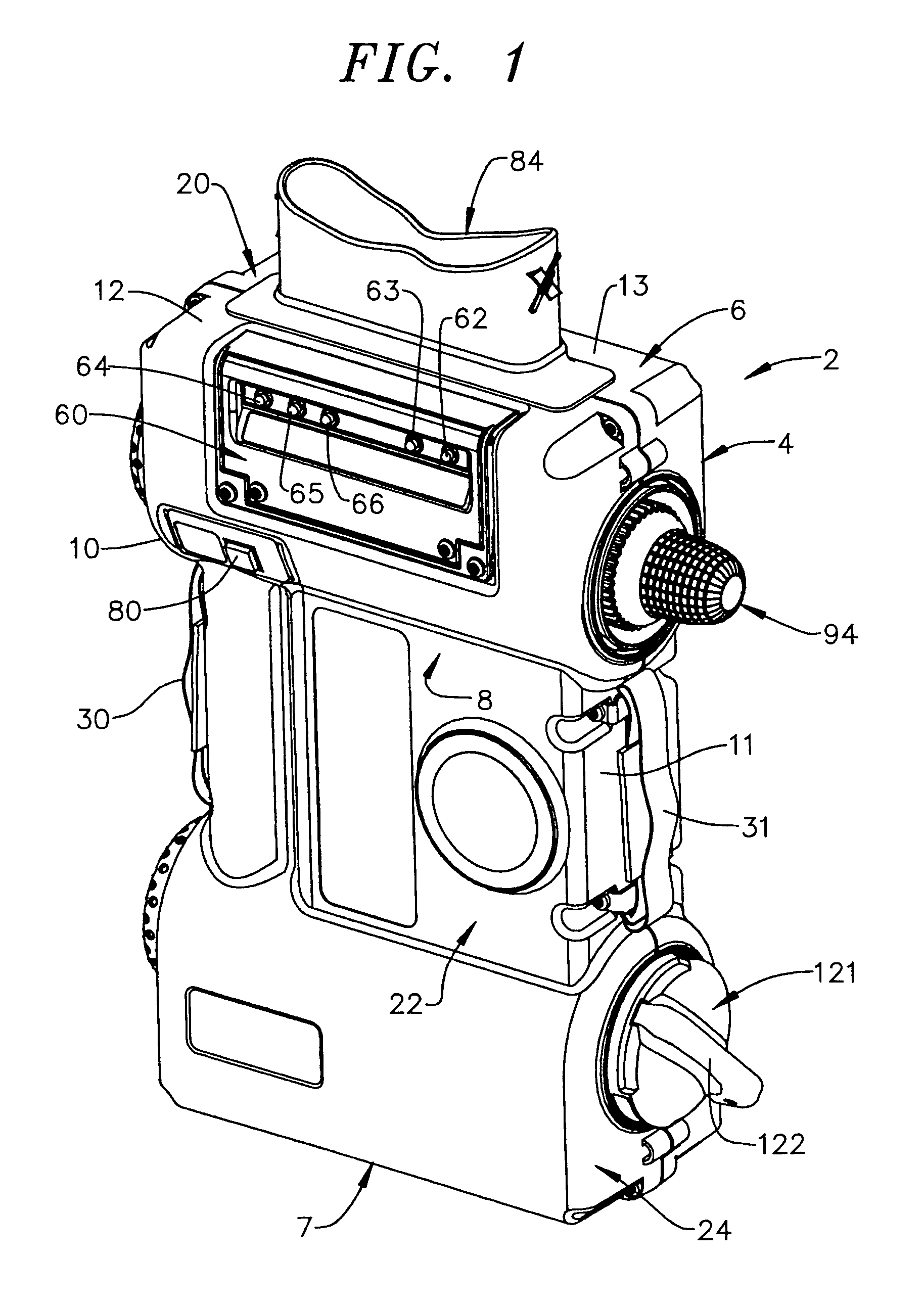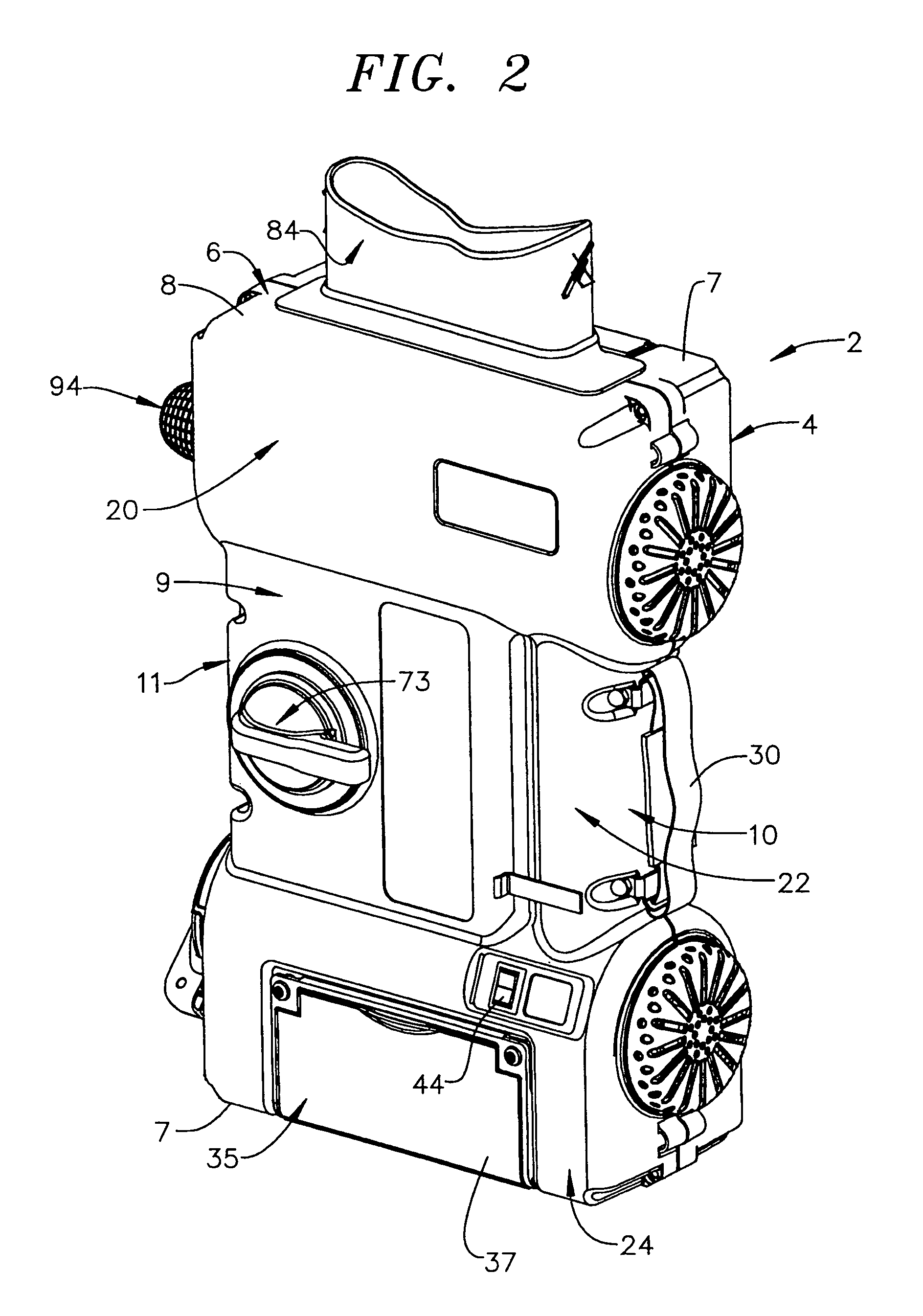Fully integrated portable screening system
a screening system and fully integrated technology, applied in the field of screening systems, can solve the problems of increasing the technical demands of such systems, bombs, or improvised explosive devices (ieds), and achieve the effect of reducing the number of complex security challenges, and increasing the number of requirements
- Summary
- Abstract
- Description
- Claims
- Application Information
AI Technical Summary
Benefits of technology
Problems solved by technology
Method used
Image
Examples
Embodiment Construction
[0022]With initial reference to FIGS. 1-3, a self contained, fully integrated, portable screening system for determining whether a subject has been in contact with a particular analyte of interest is generally indicated at 2. By portable, it should be understood that the present invention is a small (no larger than a briefcase) light unit that is readily transportable and deployable by a single individual operator. In any event, screening system 2 includes a main housing 4 having a top wall 6, a bottom wall 7, a front wall 8, a rear wall 9 and opposing side walls 10 and 11. Actually, main housing 4 is formed from first and second housing halves 12 and 13 that are joined through a plurality of mechanical fasteners (not separately labeled) arranged at various locations along top, bottom, and opposing walls 6, 7, 10 and 11. Main housing 4 is basically divided into three zones, namely an upper zone 20, an intermediate zone 22 and a lower zone 24. As will be detailed more fully below, up...
PUM
| Property | Measurement | Unit |
|---|---|---|
| wavelength | aaaaa | aaaaa |
| diameter | aaaaa | aaaaa |
| photoluminescent | aaaaa | aaaaa |
Abstract
Description
Claims
Application Information
 Login to View More
Login to View More - R&D
- Intellectual Property
- Life Sciences
- Materials
- Tech Scout
- Unparalleled Data Quality
- Higher Quality Content
- 60% Fewer Hallucinations
Browse by: Latest US Patents, China's latest patents, Technical Efficacy Thesaurus, Application Domain, Technology Topic, Popular Technical Reports.
© 2025 PatSnap. All rights reserved.Legal|Privacy policy|Modern Slavery Act Transparency Statement|Sitemap|About US| Contact US: help@patsnap.com



